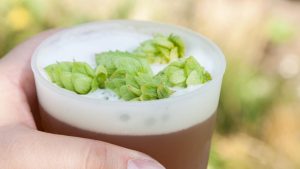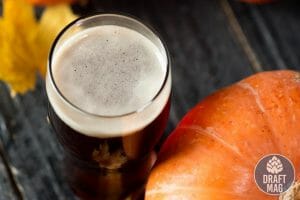Helles Lager Recipe: Brewing a Great-tasting Helles at Home
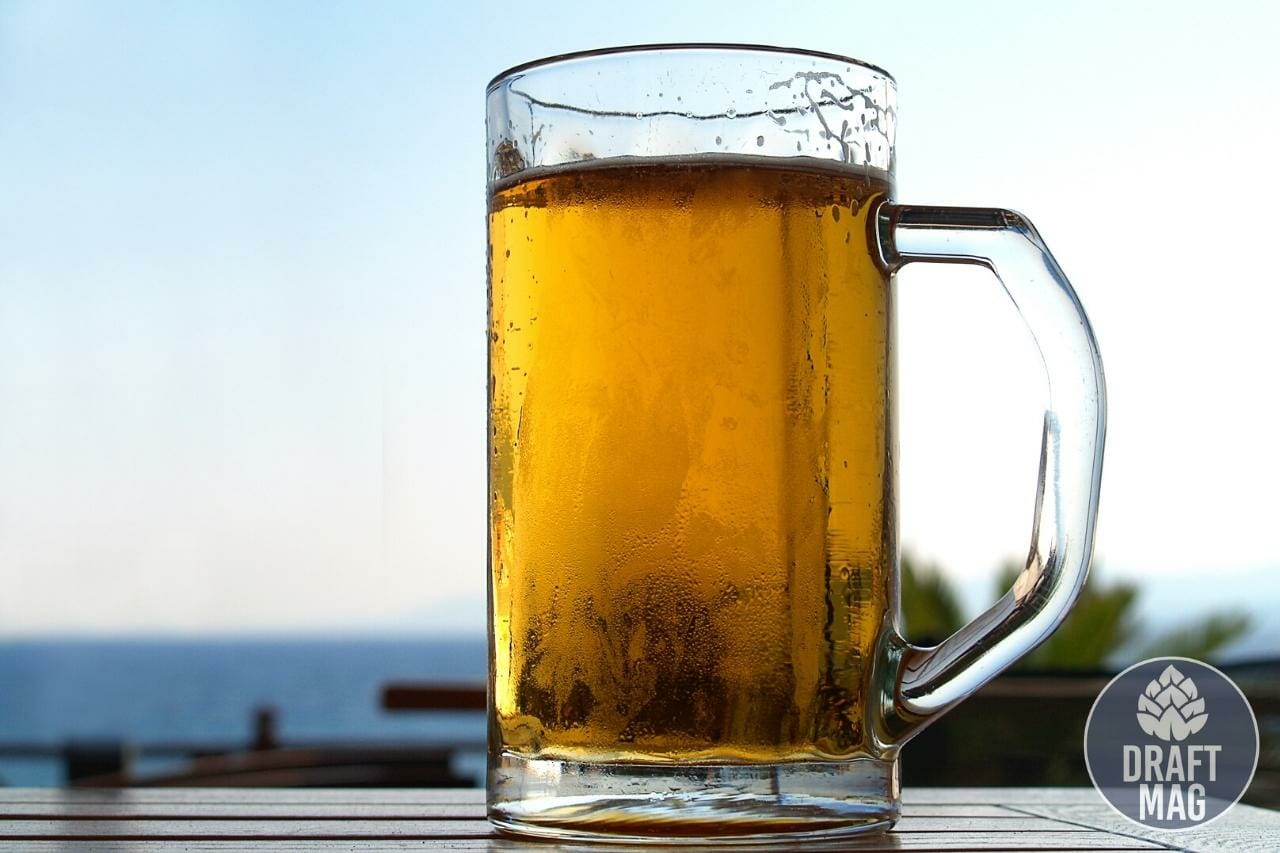 The German-style Helles lager recipe is deceptively simple as it’s made with high-quality continental Pilsner malt, hops and Munich-style lager yeast.
The German-style Helles lager recipe is deceptively simple as it’s made with high-quality continental Pilsner malt, hops and Munich-style lager yeast.
This combination brings forth subtle flavors of gritty sweet malt, hop bitterness, and a complex profile.
In this article, our expert brewers will provide you with a simplified guide to help you brew an outstanding Helles beer.
How To Make Helles Lager: Our Recipe
Like every other recipe, you’ll need to have all your ingredients ready first. Although many brewers prefer using malt extracts, we recommend using grains for a more remarkable taste.
Our expert brewers have created a simplified Helles beer recipe that makes it easy for anyone to brew this beer style.
-
Prepare Your Ingredients
Here are the ingredients you will need:
- 1 – 2 L of Pilsen malts
- 9 L of Munich malts
- 25 – 35 L of Melanoidin malts
- Munich-style lager Yeast or German back Helles Yeast
- Yeast nutrient (optional)
- German Hallertau or Tettang hops
-
Use the Best Hops for German Helles
In a Helles beer, hops act as a counterbalance. Because of this, German hops such as Hallertauer, Tettnang, Spalt and Saaz are traditionally utilized. However, you can do with other German kinds and American hybrids if they exhibit “noble” traits like peppery, floral or herbal overtones.
It is a known fact that American hops include a lot of citrus, pine and fruitiness, which you don’t want in your lager. Noble hop varieties contain less alpha-acid, so you have to use more of them to reach your preferred IBU levels. It correlates to just the correct amount of flavor and fragrance in the finished beer.
-
Start the Brewing Process
Here is a step-by-step guide to brewing a perfect batch of Helles Lager brew.
- The first step in brewing a great Helles is to mash your grains. We recommend using the step infusion mash as it is a faster and less messy way of crushing your grains.
- Add 8 liters of water to your mash setup, stir and hold at a temperature of about 130 F and wait for 20 – 30 minutes.
- Add 2 ½ liters of hot water to your mashed grains to increase the temperature to 150 F and wait for another 20 – 30 minutes.
- Increase the temperature of the mash to 170 F for a 90-minute boil.
- Make sure your wort boils well before adding your flavors, aromas and hoppy extras.
Note that the timing for these additions is very important. We advise that you add your hoppy extras about 60 minutes into the boiling time. For flavors and aroma additions, you can add them 15 and 5 minutes from the end of the boiling time, respectively.
-
Proceed to the Fermenting Process
After brewing, it’s now time to ferment your batch. Follow this guide for best results:
- It’s best to use a Munich Lager Yeast if you want your Helles to feel like an original Munich style lager.
- Make a starter with your yeast at 50 F. If you’re not sure whether your yeast is healthy, you can boost your yeast cells with any yeast nutrient of your choice and push the temperature to about 60 – 65 F.
- Make sure your wort is at a temperature of 70 F and is cool. When you’re sure of this, aerate your wort thoroughly and then pitch your yeast.
- Although it is a slow process, cold fermentation is often the best for a perfect Helles. After some days, you can gradually increase the temperature to about 60 – 65 F.
- Increase the temperature again for about a day or two and slowly lower it until it reaches the lagering level just above the freezing point.
- Before bottling it, you have to make sure your Helles brew is fully fermented. Bottling a brew that hasn’t been fully fermented results in a bad beer.
- To know if your brew is entirely well-fermented, take a sample of your brew and microwave for a few seconds.
- Sniff your microwaved brew carefully. If it has a smell similar to butter, you’ll need to allow your brew to ferment for a few more days before bottling.
-
Finish up With the Bottling Process
Once you’re sure your brew is well-fermented, you can now pour it into a beer gallon or keg and allow it to reach the carbonation of 2.5 CO2 Volumes.
Your Helles is ready to drink!
However, we advise you to always keep your brew refrigerated for it to stay fresh longer.
Other Important Information
Here are the answers to some of your burning questions about this style of beer.
– How Do You Identify a Munich Style Helles?
German Helles beers can be differentiated from other beer types through their herbal aromas, clean mouthfeel, and rich and malty taste.
-
Aroma and Mouthfeel
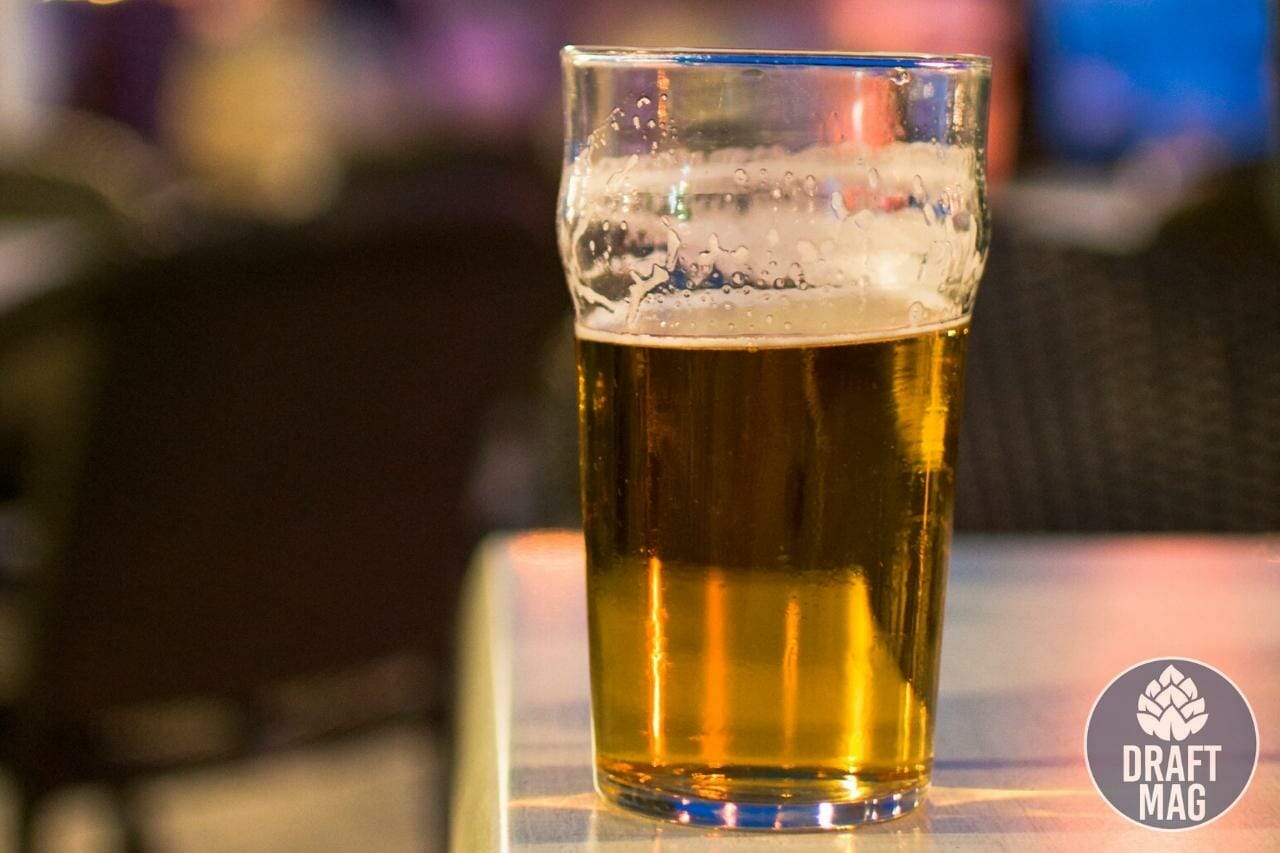 Helles often have a grainy and sometimes herbal aroma accentuated by hop spices and floral hints.
Helles often have a grainy and sometimes herbal aroma accentuated by hop spices and floral hints.
When drunk, Helles usually have a clean mouthfeel and a medium body and carbonation coupled with a dry finish.
-
Taste
You can easily know a Helles lager by its rich malty and yeast-like taste. It is due to a large amount of malts and yeast used in the brewing process. A crisp taste also characterizes most Helles. There’s a hoppiness that isn’t overwhelming but very much present.
-
Appearance
Most Helles are marked by a brilliant yellow or golden color that’s very clear. There’s also a thick foamy head that’s impossible to miss. The foamy head usually takes a long time to dissipate.
-
ABV
Many Munich-style Helles has an ABV of between four to 5.4 percent, making it an excellent choice for light and heavy drinkers.
– What Foods Can I Pair With My Homebrewed Helles Lager?
Helles are one of the most versatile beers, and you can pair them with almost any type of food. Whether it is roast chicken or spicy buffalo wings, Helles would match them perfectly. In fact, it is also a perfect pairing for any spicy food.
If you’re adventurous, you can pair your Helles lager with Thai spicy noodles or the famous Paella seafood. Another popular food to pair with a Helles lager is the Bratwurst. There’s no limit to the food you can pair from German and Asian cuisines to seafood and pork.
– What Are the Popular Helles Lager Brands?
There are several famous Helles brands such as Marie by Hill Farmstead and the Helles by Bierstadt Lagerhaus. If you’re looking to try out other Helles apart from your homebrew, here’s a list of popular Helles lagers to drink.
-
Marie by Hill Farmstead Brewery
Characterized by a brilliant appearance that’s hard to miss, Marie by Hill Farmstead Brewery is the perfect Helles to drink after a sunny day. The pilsner malty taste is hard to miss in this beer, along with its fruity hints.
This Helles has a smooth and balanced finish, making it an easy-to-drink beer. Marie has a 5 percent alcohol content, not enough to knock you off but enough to give you a nice fuzzy feeling.
-
Bierstadt Lagerhaus’ Helles
Bierstadt Lagerhaus’ Helles is a true German-style Helles Lager. It has an ABV of 4.9 percent and a creamy, malty taste. With each sip, you experience its creamy taste and a bitterness that’s biting and lingers for a while. This Helles lager is for beer lovers who love a strong drink.
-
Memoria by Hill Farmstead Brewery
Memoria is one of the most popular Helles lager brands. Brewed by the Hill Farmstead Brewery, this Helles is distinguished by its soft yet very simple taste. It’s light but has a surprisingly rich maltiness balanced by hops and creamy hints. Memoria has an ABV of 4.7 percent.
-
While by Suarez Family Brewery
Crafted after an authentic German Helles beer recipe, While by the Suarez Family Brewery is a favorite among Helles lovers. It is marked by an appealing look and a thick, foamy head. It leaves a creamy yet smooth finish when drunk, and you can detect the fruity flavors and herbal aroma. Like many other Helles, it has a nice carbonation medium body and an ABV of 5.3 percent.
-
Weihenstephaner Helles
Weihenstephaner Helles is another popular Helles by Bayerische Staatsbrauerei Weihenstephan. It has an ABV of 4.8 percent and is famous for its clean, yeasty taste. You can’t miss the rich malt and fruit flavors along with a well-balanced hoppiness. A can of this smooth, clean Helles lager will leave you feeling refreshed.
-
Velvet Glow
A Russian River Brewing Company product, Velvet Glow, is the beer to reach for if you need a crisp-tasting beer. It has a crisp, malty taste and hints of lemon or grass. Velvet Glow tastes yeasty and is quite herbal with a very dry finish. This Helles lager has an ABV of 4.7 percent and is an excellent choice for beer beginners and experienced drinkers.
FAQ
What malt is best for Helles Lager?
Optimal malt for Helles Lager is Pilsner malt. It provides a clean, crisp base with a light color and subtle flavor.
What is the best dry yeast for Helles Lager?
SafLager W-34/70 is a popular dry yeast for Helles Lager. It ferments clean and has a neutral flavor profile.
How do you ferment Helles Lager at home?
Ferment Helles Lager at 50-55°F (10-13°C) for 2-3 weeks using a temperature-controlled refrigerator or fermentation chamber.
Conclusion
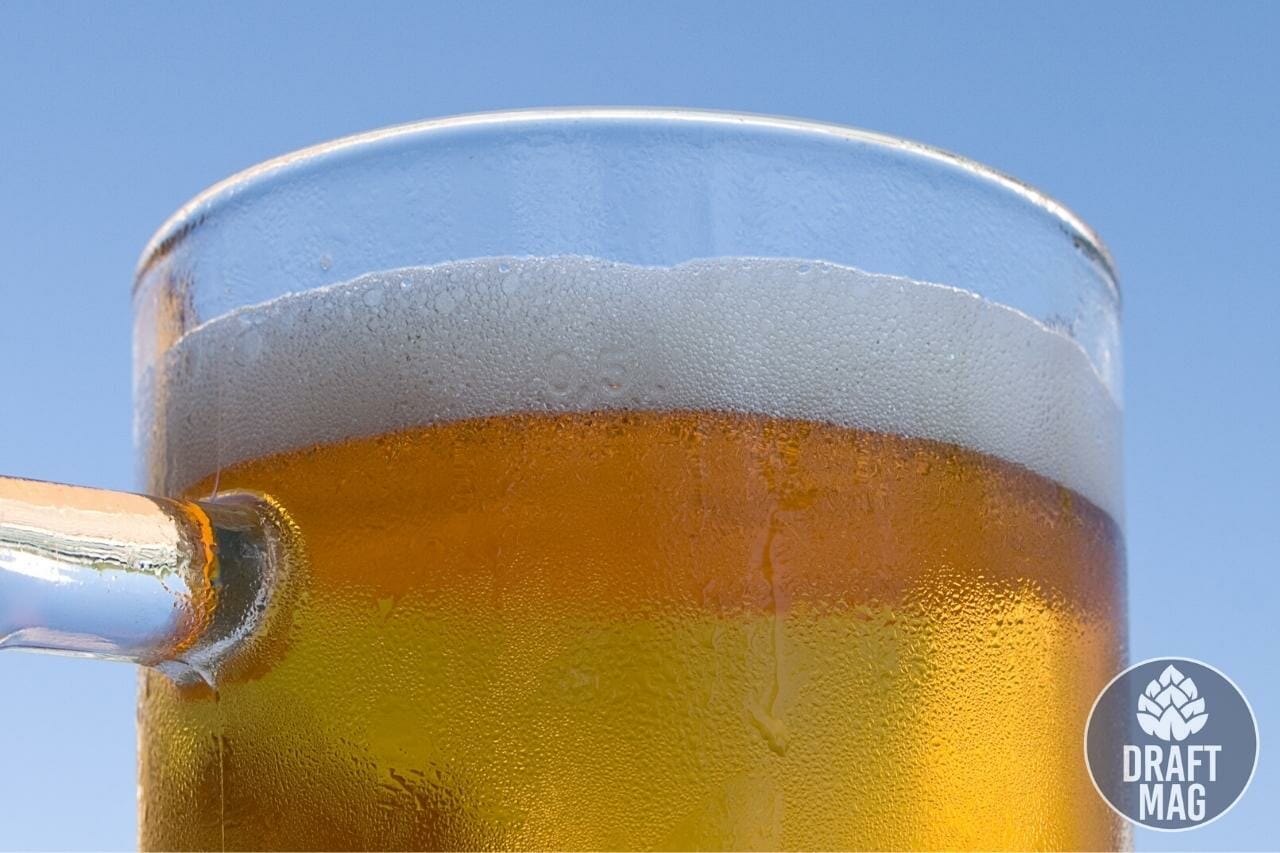 You can brew a perfect Helles lager with help from our simplified recipe. Here’s a recap of everything we discussed in this article:
You can brew a perfect Helles lager with help from our simplified recipe. Here’s a recap of everything we discussed in this article:
- The perfect Munich Helles recipe combines Pilsner malt, hops and Munich-style lager yeast alongside other ingredients.
- A Munich-style Helles can be distinguished by its appearance, aroma, mouthfeel, taste and color.
- You can pair a Helles lager with a wide variety of cuisines from German and Asian cuisines to seafood and pork.
- You can try out other popular Helles brands if you want to explore the style, including Bierstadt Lagerhaus’s Helles, Marie by Hill Farmstead Brewery and Weihenstephaner Helles.
Now that you are equipped with our Helles lager recipe, your Helles brew doesn’t have to turn out badly anymore. You can now brew an outstanding Helles that your friends and family will definitely enjoy.


